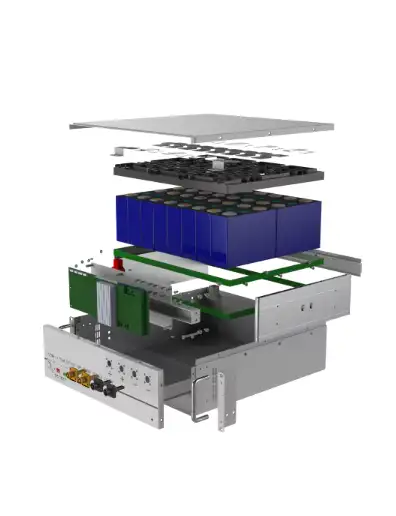ကွန်ရက်ကို နောက်ကွယ်ထားဖို့ စဉ်းစားနေတာလား။ ကွန်ရက်အပြင်မှာ နေထိုင်တာက နှစ်စဉ် လူတွေ ပိုပြီး ဆွဲဆောင်တယ်။ ဒါက စွမ်းအင်ကုန်ကျစရိတ်တွေ ဆက်တိုးလာလို့ပါ။ လူတွေဟာ သူတို့ကိုယ်ပိုင် ရပ်ချင်တယ်။ ဒါပေမဲ့ စတင်မှာ သင့်ရဲ့ စွမ်းအင်အစီအစဉ်ကို စီစဉ်ဖို့ ခေါ်ဆိုတာပါ။ ဒါမှာ ဘက်ထရီတွေဟာ အခန်းကဏ္ဍကြီးပါ။ ဒီပို့စ်ဟာ အဓိက အမှတ်တွေကို ထည့်သွင်းပါတယ်။ Off-grid ဆိုလိုတာနဲ့ မှန်ကန်တဲ့ ဘက်ထရီအရေအတွက်ကို ဘယ်လိုရွေးမလဲဆိုတာကို ဖုံးလွှမ်းပါတယ်။ ကျွန်ုပ်တို့’ နေ့စဉ် ဥပမာတွေကို သုံးပြီး ညွှန်ပြပါလိမ့်မယ်။ WonVolt ကို‘ s အရာတွေပါ။ သူတို့ရဲ့ ကိရိယာတွေဟာ ဒီအသုံးပြုမှု ကုန်ကျစရိတ်တွေ မရှိဘဲ နေရာတွေ အများကြီးကို လည်ပတ

Off-Grid နေထိုင်မှုဆိုတာဘာလဲ။
ကွန်ရက်အပြင်မှာ နေထိုင်ခြင်းဟာ မြို့ပြဝန်ဆောင်မှုတွေကနေ သင့်ကို လွှဲပေးတယ်။ လစဉ် လျှပ်စစ် ငွေပေးချေမှုတွေ မရှိဘူး။ မြို့ကလည်း ရေထုပ်ရေမရှိဘူး။ လူတွေဟာ ဝေးတဲ့ နေရာတွေမှာ တည်နေကြတယ်။ သစ်တောထားတဲ့ တိုက်ခန်းတွေ (သို့) သဲထားတဲ့ နေရာတွေကို စဉ်းစားကြည့်ပါ။ အားလုံးကို သူတို့ကိုယ်တိုင် စီမံခန့်ခွဲကြတယ်။
လွတ်လပ်စွမ်းအင်စနစ်များ
ဒီလို အစီအစဉ်တွေဟာ သင့်ကိုယ်ပိုင် စွမ်းအင်ထုတ်လုပ်သူတွေကို မှီခိုက်ပါတယ်။ နေရောင်ခြည် ပြားများသည် နေရောင်ခြည်မှ ရောင်ခြည်များကို ဖမ်းယူသည်။ လေစက်တွေဟာ လေတွေနဲ့ လှည့်လှည့်တယ်။ ဒါမှမဟုတ် ရေဘီးသေးငယ်တွေဟာ အနီးအနားရှိ ကူးတွေကို သုံးတယ်။ ရည်ရွယ်ချက်က မီးလုံးတွေ၊ အအေးစက်တွေ၊ ရေဆွဲစက်တွေအတွက် လုံလောက်တဲ့ လျှပ်စစ် ဖန်တီးဖို့ပါ။ Montana ရဲ့ သစ်တောတွေမှာရှိတဲ့ အိမ်တစ်အိမ်ကို ကြည့်ပါ။ သူတို့ဟာ စနစ်တစ်ခုလုံးကို ထည့်သွင်းတယ်။ ၎င်းတို့ရဲ့ နေရာကို နံနက်ပွဲကနေ ညပွဲတွေအထိ ပြုလုပ်ပါတယ်။
ပြန်လည်သုံးစွဲနိုင်သော စွမ်းအင်များအပေါ် ယုံကြည်ခြင်း
နေရောင်ခြည်နဲ့ လေတွေဟာ စာရင်းထဲက ထိပ်တန်းပါ။ ဒီအရင်းအမြစ်တွေဟာ လောင်စာကုန်ကျစရိတ်တွေကို လျှော့ချပြီး လေထဲက ညစ်စက်တွေကို လျှော့ချပ ဒါပေမဲ့ ကောင်းကင်ဟာ ခင်ဗျားကို လှည့်စားနိုင်ပါတယ်။ မီးခိုးရောင်တဲ့ မိုးကောင်းကင် ဒါမှမဟုတ် နေထိုင်တဲ့ ညတွေဟာ စွမ်းအင်သစ်မရှိဘူးဆိုတာပါ။ အဲဒီမှာ သိုလှောင်မှု အဆင့်တွေပါ။ ဒီလွတ်လပ်တဲ့ နေရာတွေကို ဖြည့်ပေးတယ်။
WonVolt ကို’ ဖြေရှင်းနည်းများတွင် အခန်းကဏ္ဍ
WonVolt ဟာ တည်ငြိမ်တဲ့ နေရောင်ခြည်စွမ်းအင်ပြားတွေနဲ့ ဘက်ထရီတွေနဲ့ ပေါ်လာပါတယ်။ သူတို့ရဲ့ ပစ္စည်းတွေဟာ ခိုင်မာတဲ့ ပြားတွေလိုပဲ နေ့တွေမှာတောင် အလင်းကို ပိုဆွဲဆောင်တယ်။ WonVolt kits တွေဟာ ဆောင်းရာသီတွေမှာ တိုက်ခန်းတွေကို ဘယ်လို အလင်းပေးတယ်ဆိုတာ လူတွေက ကောင်းတာတွေ ပြောကြတယ်။ Arizona မှာရှိတဲ့ လူတစ်ယောက်က သူတို့ရဲ့ စက်ရုံဟာ ဒီဂရီ ၁၂၀ နေ့တွေမှာ ကောင်းမွန်စွာ ကိုင်တွယ်န
သင်ဘာကြောင့် Off-Grid နေထိုင်ရန်ဘက်ထရီလိုအပ်ပါတယ်
ဘက်ထရီတွေဟာ add-ons တွေထက် ပိုကြီးပါတယ်။ သူတို့ဟာ အဓိက အပိုင်းတွေအဖြစ် ရပ်နေကြတယ်။ သူတို့မရှိဘူးဆိုရင် အလင်းရောင်တဲ့ နေ့တွေကနေ အပိုစွမ်းအင်က ပျောက်သွားပါတယ်။ ညတွေလည်း အနက်ရောင်လာတယ်။
စွမ်းအင်သိုလှောင်မှု မရှိမဖြစ်သော အရာများ
ဒါကို စိတ်ကူးကြည့်ပါ။ ခင်ဗျားတို့ရဲ့ ပန်းလ်တွေဟာ နေရောင်ခြည်ကြီးမှာ ၅ ကီလိုဝါတ်နာရီကို ထုတ်လွှတ်တယ်။ ဒါပေမဲ့ အဲဒီအချိန်မှာ ၂ ကီလိုဝါတ်နာရီပဲ ဆွဲနေတယ်။ ဘက်ထရီတွေဟာ ကျန်တာတွေကို နောက်ပိုင်းအတွက် ထိန်းသိမ်းထားတယ်။ ခဲအက်ဆစ်အမျိုးအစားတွေဟာ စတင်တွေအတွက် ကောင်းပါတယ်။ လီသီယမ်-အိုင်းတွေဟာ ပိုရှည်ကြာပြီး ပိုမြန်စွာ ဖြည့်ပါတယ်။ ဝေးလံနေရာတွေမှာ အဲဒါက စွမ်းအင်ကို ပေးတယ်။ ညလုံး အသံကြီးတဲ့ စက်တွေ မရှိဘူး။
လျှပ်စစ်ပစ်မှုအတွင်း
Grid လူတွေဟာ မှောင်မိုက်တဲ့ အချိန်တွေကို ရာသီဥတု မကောင်းမှု (သို့) ဆွဲဆောင်မှု အများကြီးကြောင့ ကွန်ရက်အပြင်မှာလား။ သင့်ကိုယ်ပိုင် ပြပွဲကို ပြုလုပ်ပါတယ်။ ဘက်ထရီတွေဟာ အနားမခိုက်ဘဲ ဝင်လာတယ်။ ၂၀၂၃ ခုနှစ် Texas မြို့ရှိ အအေးချိန်မှာ သိုလှောင်မှုကောင်းတဲ့ အိမ်တွေဟာ အဆင်ပြေနေခဲ့တယ်။ အခြားသူတွေဟာ အေးခဲသွားတယ်။
WonVolt Panel များနှင့် ပေါင်းစပ်ခြင်း
WonVolt ဘက်ထရီတွေဟာ ၎င်းတို့ရဲ့ နေရောင်ခြည်ပြားတွေနဲ့ ကောင်းမွန်စွာ ကိုက်ညီပါတယ်။ WV လိုင်းက လွယ်ကူစွာ ဆက်သွယ်ပါတယ်။ စမတ်သေတ္တာတွေဟာ လက်ရှိကို ကိုင်တွယ်ပါတယ်။ သာမန် စက်ရုံတစ်ခုဟာ ဘက်ထရီ နှစ်ခုနဲ့ ပြားလေးခုကို ချိတ်ဆက်နိုင်ပါတယ်။ ဒါက နေ့စဉ် ၁၀-၁၅ ကီလိုဝါတ်နာရီပေးတယ်။ လူတွေဟာ ချောမွေ့တဲ့ ချိတ်ဆက်မှုတွေကို သတိပြုကြတယ်။ Apps တွေဟာ ငွေကြေးပမာဏနဲ့ သင်ဘယ်လို သုံးတာကို ကြည့်ပါတယ်။
နေ့စဉ် စွမ်းအင်သုံးစွဲမှုကို ဘယ်လိုတွက်ချက်ရမလဲ
ပထမဆုံး သင့်အသုံးပြုမှုကို စဉ်းစားပါ။ Don’ တော့ မှန်းပါ။ မှန်ကန်စွာ ထည့်ပါ။
အိမ်သုံးပစ္စည်းများ စာရင်း
ပလက်လိုအပ်တာအားလုံးကို ရေးသားပါ။ ပိုအေးလား။ ၁၅၀ ဝါတ်။ မီးလုံးတွေ။ ၁၀ ဝါတ်ပါ။ မျက်နှာပြင်လား။ ၁၀၀ ဝတ် အခန်းငယ်တစ်ခုအတွက် မြန်ဆန်သော ဖိုချောင်စက် (၈၀၀ ဝက်) ၊ ရေပူစက် (၁၅၀၀ ဝက်) နှင့် ဖူစက်အချို့ကို ထည့်ပါ။ ကြီးမားတဲ့ နေရာတွေက သန့်ရှင်းစက်၊ ခြောက်သွေ့စက်၊ ဒါမှမဟုတ် လေအေးစက်တွေကို ထုတ်လိုက်ပါတယ်။
အသုံးပြုမှုနာရီခန့်မှန်းချက်
နောက်တစ်ခု ပြေးချိန်ကို မှန်းမိပါ။ ၈ နာရီအတွင်း ပိုအေးလား။ ဒါ’ ၁၂၀၀ ဝတ်နာရီ။ အလင်းတွေ ၅ နာရီလောင်လား။ မီးလေးလုံးအတွက် ဝတ်နာရီ ၂၀၀ ထည့်ပါ။ လေးဦးတည်းသော အုပ်စုသည် တစ်နေ့လျှင် ၁၀-၂၀ kWh ကို ရောက်နိုင်သည်။ ဒါက ပုံမှန်တွေပေါ် မူတည်ပါတယ်။ LED မီးတွေကို သွားခြင်းဖြင့် ချွေတာပါ။ ၎င်းတို့ဟာ မီးလုံးဟောင်းထက် နည်းပါတယ်။
WonVolt တွက်ချက်စက်များကိုသုံးပါ
WonVolt ကို’ ဝက်ဘ်ကိရိယာတွေက ဒါကို ရိုးရှင်းပေးတယ်။ သင့်ပစ္စည်းတွေနဲ့ အချိန်တွေကို ရိုက်ထည့်ပါ။ ဒါက ငွေပေးတယ်။ လူတစ်ယောက်ဟာ သူတို့ရဲ့ စခန်းစက်အတွက် ၁၂ ကီလိုဝါတ်နာရီကို ရှာဖွေခဲ့တယ်။ ပြီးတော့ ဘက်ထရီတွေကို ထည့်ပေးတယ်။ ဒီကိရိယာတွေဟာ ခင်ဗျားရဲ့ နေရာကိုလည်း စဉ်းစားပါတယ်။ ကယ်လီဖိုးနီးယားမှာ နေရောင်ခြည်ပိုများတာက Seattle မှာ မိုးရေတဲ့ နေရာတွေနဲ့ နှိုင်းယှဉ်ပြီး သိုလှ
ဘက်ထရီလိုအပ်ချက်များကို သက်ရောက်စေသော အချက်များ
တည်ဆောက်မှုတိုင်းဟာ မကိုက်ညီဘူး။ အချို့အရာတွေက ဘက်ထရီအရေအတွက်ကို ပြောင်းလဲပေးတယ်။
အနက်ရှိုင်းမှ discharge
ဒါက ဘက်ထရီကို မဖြည့်ခင်မီ ဘယ်လောက် နည်းလောက်လဲဆိုတာကို ပြသပါတယ်။ ခဲအက်ဆစ်ဟာ ၅၀% ထက် ပိုကောင်း အောက်သွားပြီး မြန်ဆန်ပျက်စီးပါတယ်။ လီသီယမ်ဟာ ၈၀-၉၀% ကို ကိုင်တွယ်ပါတယ်။ ၁၀၀ Ah ဘက်ထရီအတွက် ၅၀% ကျဆင်းပြီး ၅၀ Ah ကို အသုံးပြုနိုင်ပါတယ်။ ကြိုးစားပြီး ၅ နှစ်ကနေ ၂ နှစ်အထိ ကျဆင်းပါတယ်။
စနစ်ဗို့အားအဆင့်များ
ကွန်ရက်ပြင်ပရှိ စက်ရုံများစွာသည် 12V၊ 24V သို့မဟုတ် 48V ကို အသုံးပြုသည်။ မြင့်မားတာက ကြိုးတွေရဲ့ ဆုံးရှုံးမှု နည်းတာပါ။ 48V က ကြီးမားတဲ့ ဆွဲဆောင်မှုတွေကို ပိုကောင်းစွာ ကိုင်တွယ်ပါတယ်။ နက်ရှိုင်းတဲ့ ဆွဲစက်တစ်ခုကို ရေချိုးခြင်းမရှိဘဲ ပြေးခြင်းလိုပါ။ WonVolt အရာတွေဟာ အားလုံးနဲ့ အလုပ်လုပ်ပါတယ်။ ဒါပေမဲ့ 48V ဟာ အိမ်ကြီးတွေအတွက် အကောင်းဆုံးပါ။
WonVolt ဘက်ထရီ စွမ်းဆောင်ရည်များ
WonVolt မှာ ဘက်ထရီ ၁၀၀ Ah ကနေ ၃၀၀ Ah အထိ ရှိပါတယ်။ သူတို့ရဲ့ လီသီယမ်အမျိုးအစားတွေဟာ နေရာသေးငယ်တွေမှာ ပိုထုပ်ထားတယ်။ စင်ကွက်အောက်က သေတ္တာထဲမှာ ၅.၁ ကီလိုဝါတ်နာရီပါ။ အခြားသူတွေနဲ့ ဆန့်ကျင်ရင် ၎င်းတို့ဟာ ၂၀% ပိုမြန်ဆန်ပါတယ်။ ဒါ’ စစ်မှန်တဲ့ စစ်ဆေးမှုတွေကနေ။
ဘက်ထရီဘယ်လောက်လိုပါ
သင်္ချာလုပ်ပါ။ ဒါက’ သင့်ရဲ့ ဆွဲဆောင်မှုကို သိတဲ့အခါ ရိုးရှင်းပါတယ်။
အခြေခံဖော်မူလာ Application
နေ့စဉ် ဆွဲခြင်းကို ဘက်ထရီအရွယ်အစားနဲ့ ခွဲခြားပါ။ ကျဆင်းမှုအဆင့်အတွက် ပြင်ဆင်ပါ။ တစ်နေ့လျှင် ၁၀ ကီလိုဝါတ်နာရီ သုံးတယ်လို့ ဆိုပါစို့။ ၈၀% ကျဆင်းတဲ့ ၅ kWh ဘက်ထရီက ၄ kWh ကို အသုံးပြုနိုင်ပါတယ်။ သင်’ တစ်နေ့အတွက် သုံးခုလိုတယ်။ ဒါပေမဲ့ ၂-၃ ရက်ကြာ ရိုက်ကူးပါ။ ဒါက ကြမ်းမွန်တဲ့ ရာသီဥတုကို ဖုံးလွှမ်းတယ်။
ထိရောက်မှုဆုံးရှုံးမှုအတွက် အကောင့်
အရာတွေက’ t ပြီးပြည့်စုံတယ်။ DC ကို AC သို့ ပြောင်းလဲခြင်းဖြင့် သေတ္တာများသည် ၁၀-၁၅% ဆုံးရှုံးသည်။ စစ်မှန်သော နေရာများတွင် panel များသည် ၈၀% အစီအစဉ်တွေကို ၂၀% ထည့်ပါ။ ၁၀ kWh လိုအပ်ရန် ၁၂ kWh ကို ရည်ရွယ်ပါ။ စစ်မှန်တဲ့ ဇာတ်လမ်း: Colorado မြို့က ဘက်ထရီ နှစ်ခုနဲ့ စတင်ခဲ့တယ်။ ဒါပေမဲ့ ၎င်းတို့ဟာ အအေးတဲ့ လတွေမှာ စတော့ကို ဖြတ်ပြီးနောက် သုံးပုံတစ်ပုံကို ထပ်ခဲ့ကြတယ်။
WonVolt မှ အကြံပြုချက်များ
WonVolt ကပြောတာက အသေးစား စပြီး ကြီးထွားပါ။ အိမ်ငယ်တစ်ခုအတွက် WV51100L နှစ်ခုအလုပ်လုပ်ပါတယ်။ လေးခု (သို့) ဒါထက်ပိုပါ။ သူတို့ရဲ့ အဖွဲ့ဟာ အခမဲ့ ဆွေးနွေးမှုတွေ ပေးတယ်။ ဝယ်သူတစ်ယောက်က ဒေါ်လာ ၅၀၀ ကို မှန်ကန်တဲ့ အရွယ်အစားနဲ့ လျှော့ချခဲ့တယ်။
WonVolt ထုတ်ကုန်များသည် Off-Grid အတွက်အကောင်းဆုံး
WonVolt ကို’ ရွေးချယ်မှုတွေဟာ လိုအပ်ချက်တွေနဲ့ ကိုက်ညီတယ်။ ဒီမှာ’ ဘာပေါ်လာတာလဲ။
WV51100L အိမ်သာဘက်ထရီ
ဒီ ၅.၁ kWh ခဲအက်ဆစ် ယူနစ်ဟာ ဒေါ်လာ ၈၀၀ ခန့်ကို ကုန်ကျပါတယ်။ ဒါက’ အိတ်ပိုက်မှာ လွယ်ကူပါတယ်။ ၁၀၀ Ah ကို ၅၁.၂V မှာ လုပ်နိုင်တယ်။ လူသစ်တွေအတွက် ကောင်းပါတယ်။ ကြမ်းပြင်ကို လွတ်လပ်စေရန် နံရံပေါ်မှာ ဆွဲထားပါ။ အဝေးရှိ အုပ်စုတွေမှာရှိတဲ့ လူတွေဟာ ဒါက ဘယ်လောက် ခက်ခဲတယ်ဆိုတာ ကြိုက်ကြတယ်။ တစ်ယောက်က ၇ နှစ်

WV51300L လီသီယမ် Option ကို
ဒေါ်လာ ၁၂၀၀ အတွက် လီသီယမ်ကို သွားပါ။ 300 Ah ဆိုလိုတာက နေရာတစ်ခုတည်းမှာ အရည်ရည်ပိုပါတယ်။ ခဲအက်ဆစ်လို ၈ နာရီမဟုတ်ဘဲ ၄ နာရီအတွင်းမှာ ဖြည့်ပါတယ်။ ကိရိယာတွေ (သို့) လျှပ်စစ်စီးတွေလို လေးထန်တဲ့ ဆွဲသူတွေအတွက် ကောင်းပါတယ်။ မှတ်ချက်တွေက ၉၅% အလုပ်နှုန်းကို ပြပါတယ်။ ဒါ’ ပုံမှန်ထက် s ။
လိုက်ဖက်နိုင်သော Solar Panel များ
WonVolt နှင့်အတူအဖွဲ့’ s ကို 400W ပြားများ။ ထိပ်ဆွဲမှုအတွက် Crystal အမျိုးအစားပါ။ လေးခုဟာ အကောင်းဆုံး ၁.၆ ကီလိုဝါတ်ပါ။ တစ်နေ့ကို ဘက်ထရီ နှစ်ခု ဖြည့်ဖို့ လုံလောက်ပါတယ်။ ၎င်းတို့ဟာ ရေခဲဘောလုံးတွေနဲ့ ခိုင်မာတဲ့ တိုက်ခိုက်တွေကို ရပ်နိုင်ကြတယ်။ စစ်မှန်တဲ့ ခြောက်သွေ့တဲ့ မြေတွေမှာ စစ်ဆေးတယ်။ WV-72KUN စီးရီးလို PV မော်ဂျူးတွေအတွက် ခိုင်မာတဲ့ အာမခံချက်တွေ ပေးတယ်။ တစ်မျက်နှာတည်းသော PERC မော်ဒယ်များသည် ထုတ်ကုန်အမှားယွင်းများအပေါ် ၁၂ နှစ်အတွင်းရှိသည်။ မျက်နှာနှစ်ခု ရှိသူတွေဟာ ၁၅ နှစ်ပါ။ စွမ်းအင်ထုတ်လုပ်မှုလည်း နှစ် ၃၀ အထိ ခိုင်မာစွာ တည်နေပြီး အနည်းဆုံး ကျဆင်းလာပြီး တစ်ချို့အမျိုးအစားတွေအတွက် ပထ
ဘက်ထရီစနစ်ကို ဘယ်လိုထိန်းသိမ်းရမလဲ
ကောင်းမွန်စွာ ဆက်သွားပါ။ စစ်ဆေးမှုတွေကို လွှဲပြီး ပြဿနာတွေလာတယ်။
ပုံမှန် စစ်ဆေးမှုများ လိုအပ်သည်
လစဉ် လင့်ခ်တွေကို ကြည့်ပါ။ သံချေမှု (သို့) ချောမှု လိုင်းတွေကို စောင့်ကြည့်ပါ။ ဆိုဒါရောစပ်နဲ့ အဆုံးသတ်ပါ။ ညစ်စက်တဲ့ နေရာတွေမှာ အပူတွေကို ရပ်တန့်ဖို့ အပေါက်တွေကနေ ဖုန်မှုန့်ထွက်တယ်။ အင်တာနက်မှ ထွက်သွားသူတစ်ယောက်ဟာ မကြာခင်မှာ ဝတ်နေတဲ့ ကြိုးတစ်ခုကို တွေ့ခဲ့တယ်။ မီးလောင်ကို ရပ်ဆိုင်းခဲ့တယ်။
အကောင်းဆုံး အားသွင်းမှု အလေ့အကျင့်များ
အလွန်များစွာ ဖြည့်ဖို့ကို ရှောင်ရှားပါ။ ထိပ်ပိုင်းမှာ ရပ်နေတဲ့ ပိတ်တွေကို သုံးပါ။ နေရောင်ခြည် စက်ရုံတွေဟာ အကောင်းဆုံးအတွက် စမတ်အမျိုးအစားတွေ လိုအပ်ပါတယ်။ အပတ်နှစ်ပတ်တိုင်းမှာ အပိုင်းတွေအထိ စက်ဝန်းအပြည့်အဝ လုပ်ပါ။ WonVolt apps တွေဟာ ပြဿနာတွေကို သတိပေးတယ်။ နိမ့်တဲ့ ဆွဲခြင်းလိုပါ။
WonVolt အာမခံလမ်းညွှန်ချက်များ
WonVolt ဟာ သူတို့ရဲ့ ပစ္စည်းတွေကို ခိုင်မာစွာ ထောက်ပံ့တယ်။ WV51100L နှင့် WV51300L ကဲ့သို့သော ဘက်ထရီများအတွက် ၎င်းတို့သည် CE အမှတ်တံဆိပ်များဖြင့် EMC စံနှုန်းများကို ဖြည့် ဆိုလိုတာက ပစ္စည်းအများစုမှာ ၅-၁၀ နှစ် ကာကွယ်မှုပါ။ အွန်လိုင်းမှာ မှတ်ပုံတင်ပြီး ပိတ်ထားပါ။ နက်ရှိုင်းတဲ့ ရေစွန်းစက်တွေလို ကြမ်းမွန်တဲ့ အရာတွေဟာ သဘောတူညီမှု တောင်းဆိုမှုတွေဟာ ချောမွေ့ပြီး ဓာတ်ပုံတွေ ရိုက်ပြီး ပို့ပြီး အစိတ်အပိုင်းသစ်တွေကို မြန်ဆန် ပို့ပေးပါတယ်။ panel များအတွက်, it’ ပိုကောင်းတယ်။ ထုတ်ကုန်အာမခံမှုက တစ်မျက်နှာတည်းအတွက် ၁၂ နှစ်၊ နှစ်မျက်နှာနှစ်အတွက် ၁၅ နှစ်ပါ။ ၂၅-၃၀ နှစ်ပြီးနောက်မှာ စွမ်းအင်ဟာ အမျိုးအစားပေါ် မူတည်၍ ၈၄% ထက်ပိုကြီးပါတယ်။ ပုံမှန် ဝတ်ဆင်မှုကြောင့် စိုးရိမ်မပါဘူး၊ ဒါပေမဲ့ အဝတ်အနေတွေကို ရှောင်ရှားဖို့ တပ်ဆင်မှုကို မ
အင်တာနက်ကို ပိတ်ခြင်းဟာ လွတ်လပ်ခြင်းထက် ပိုကျော်လွန်ပါတယ်။ ဒါက’ WonVolt’ ကဲ့သို့သောအရာများနှင့်အတူပညာရှိသော setup ကို သင့်လိုချင်ချက်တွေကို စီစဉ်ပြီး မှန်ကန်တဲ့ ဘက်ထရီတွေကို ရွေးချယ်ပြီး တည်ငြိမ်တဲ့ စွမ်းအင မေးခွန်းတွေ ရှိလား။ ဆက်သွယ်ပါ။.
FAQ များ
မေးခွန်း ၁: WonVolt ဘက်ထရီများသည် ကွန်ရက်ပြင်သော setup များတွင် ဘယ်လောက်ကြာတည်ရှိသလဲ။
အမျိုးအစားအပေါ် မူတည်ပြီး မှန်ကန်တဲ့ စောင့်ရှောက်မှုနဲ့ ၅-၁၀ နှစ်ပါ။ လီသီယမ်ပုံစံတွေဟာ မကြာခဏ အထက်ပိုင်းကို ထိတွေ့ပေမဲ့ ခဲအက်ဆစ်ဟာ ပိုအာရုံစိုက်ဖို့လိုတယ်။
မေး ၂: WonVolt ဘက်ထရီများကို အခြားတံဆိပ်များနှင့် ရောစပ်နိုင်သလား။
ဒါက’ ဖြစ်နိုင်ပေမဲ့ အကြံပြုချက်မရှိဘူး။ ဗို့အားနဲ့ အမျိုးအစားတွေကို ကိုက်ညီတာက မညီမျှမှုတွေကို ရှောင်ရှားတယ်။ အကောင်းဆုံး စွမ်းဆောင်ရည်အတွက် WonVolt ကို ဆက်လက်နေပါ။
Q3: ဘာလဲ’ WonVolt နဲ့ ကွန်ရက်ထဲကို ထွက်သွားဖို့ ကုန်ကျစရိတ်က ဘာလဲ။
အခြေခံပုံစံအတွက် ဒေါ်လာ ၅၀၀၀ မှ ၁၀၀၀ ဟာ ပြားများနဲ့ ဘက်ထရီတွေကို ဖုံးလွှမ်းပါတယ်။ တပ်ဆင်ခြင်းတွင်အချက် - DIY ကိုချွေတာပေးသည်၊ ကျွမ်းကျင်သူများသည်လုံခြုံရေးကိုအာမခံပေးသည်။

